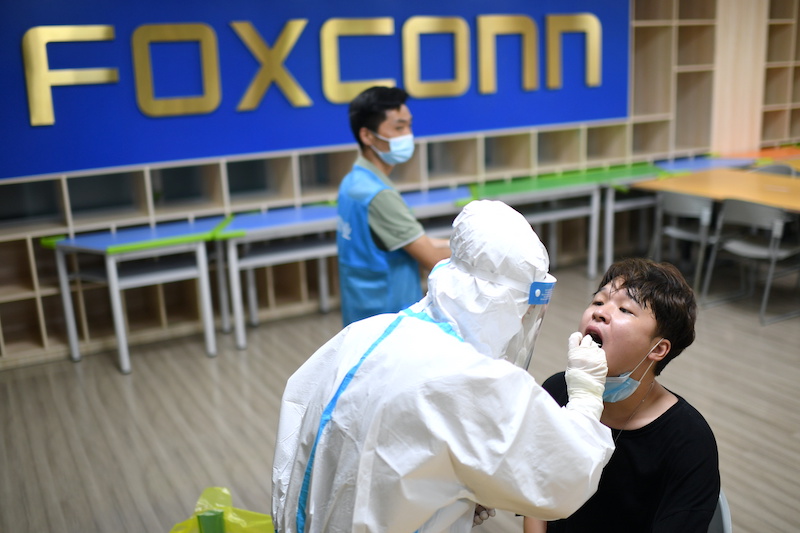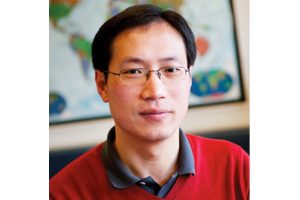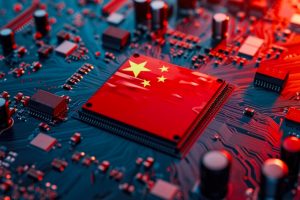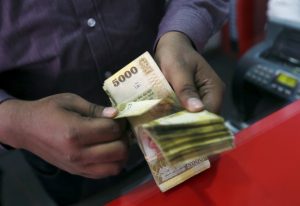To keep factory lines open in the face of Covid-19 curbs, Chinese firms are asking workers to eat, sleep and work in bubbles isolated from the wider world, sterilising premises as often as three times a day and testing for coronavirus daily.
Dubbed “closed-loop management”, this approach has been part of China’s efforts over the past two years to keep local transmission extremely low by global standards.
It was used at the Winter Olympics in Beijing to seal event personnel off from the public.
It is now being touted by local Chinese authorities as a solution for companies who want to stay open as the country tackles its biggest outbreak in two years.
Many of the harshest curbs have been applied in manufacturing hubs such as Shenzhen, Dongguan and Changchun, forcing numerous factories to shut.
Apple supplier Foxconn said it was able to restart some production at its campus in the southern tech hub of Shenzhen after it put such an arrangement in place.
State media outlet Securities Times said television maker TCL, chip fab Semiconductor Manufacturing International Corporation, and Apple supplier Shenzhen Deren Electronic were keeping factories in affected areas open via closed loop systems.
The companies did not respond to requests for comment.
Tesla is planning a similar arrangement for its Shanghai factory, Reuters reported on Wednesday.
Containment Programme
On Thursday, China’s southern city of Shenzhen, which has suspended buses, subways and all non-essential economic activity in a week-long containment programme, said it will allow firms to resume work in an “orderly” manner.
Creating such bubbles, however is not easy. Foxconn said it could only apply the bubble on campuses that included both employee housing and production facilities.
Jin Yong, a factory worker in Shenzhen, told Reuters he had not stepped out of the electronics plant where he works since late February, when they started operating a “closed-loop” system for more than 2,000 workers.
While it was slightly depressing to not be able to leave for a walk, he said he felt that it was a good approach to battle the pandemic.
“We have to take a test every day,” he said. “And every day we have to maintain a special code showing that we’ve been tested within 24 hours,” he said, describing the factory site as self-sufficient with a barber shop, canteen and fruit shop.
The workers live in dormitories.
Companies also need to strictly follow government guidelines for how to manage staff inside the bubble.
A notice from the Dongguan city government on Tuesday said firms had to control the flow of people on their sites to prevent large groups from gathering and to stop people from dining in the canteens.
One industrial zone in Dongguan went a step further by telling firms that they needed to cap the number of workers per 100 square metres at 10 people and sterilise factory floors, elevators and canteens at least three times a day.
Five districts in Shenzhen that have achieved “community-wide Covid-19 dynamic clearance” can restart work and resume public transport from Friday, the municipal government said.
- Reuters, with additional editing by George Russell
READ MORE:
AF TV – China Covid Spike Threatens Global Economy
Travel Bubble With Singapore Brings Students Back To Australia
Fiji proposes ‘travel bubble’ as GDP set to shrink
























